Due to scheduled maintenance, the National Library’s online services will be unavailable between 8pm Friday 29 November and 11am Saturday 30 November. Find out more.
Decorative Details
Ellis Rowan was commissioned by Sydney-based China importers to visit New Guinea and paint wildflowers and Birds of Paradise. Comparing the paintings she made of Birds of Paradise on paper with the plate designs she painted on the muslin discs, indicates that she likely painted the former first because they are more closely aligned to her traditional working methods—that is, being watercolour on rectangular sheets of paper. The gold borders on the discs resemble the gold rim of the plates.

Ellis Rowan, Arfak Astrapia (Astrapia nigra), c.1917, nla.cat-vn215168
Here we can see how a larger painting has been adapted to a plate design. The shape of the bird and its long tail means it appears squashed on the round surface.
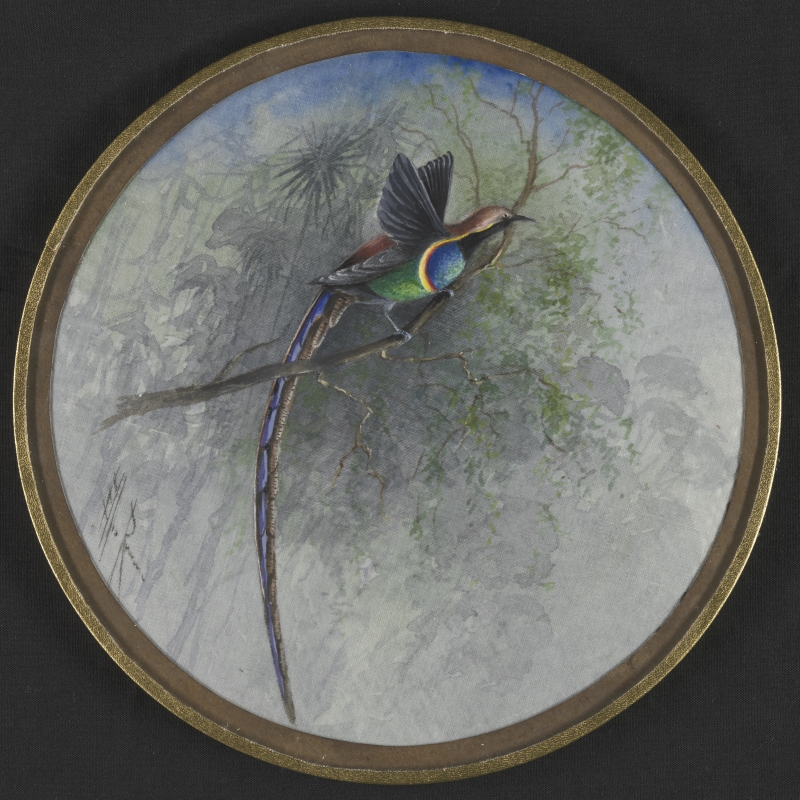
Ellis Rowan, most likely Huon Astrapia (Astrapia rothschildi), c.1917, nla.cat-vn1736459
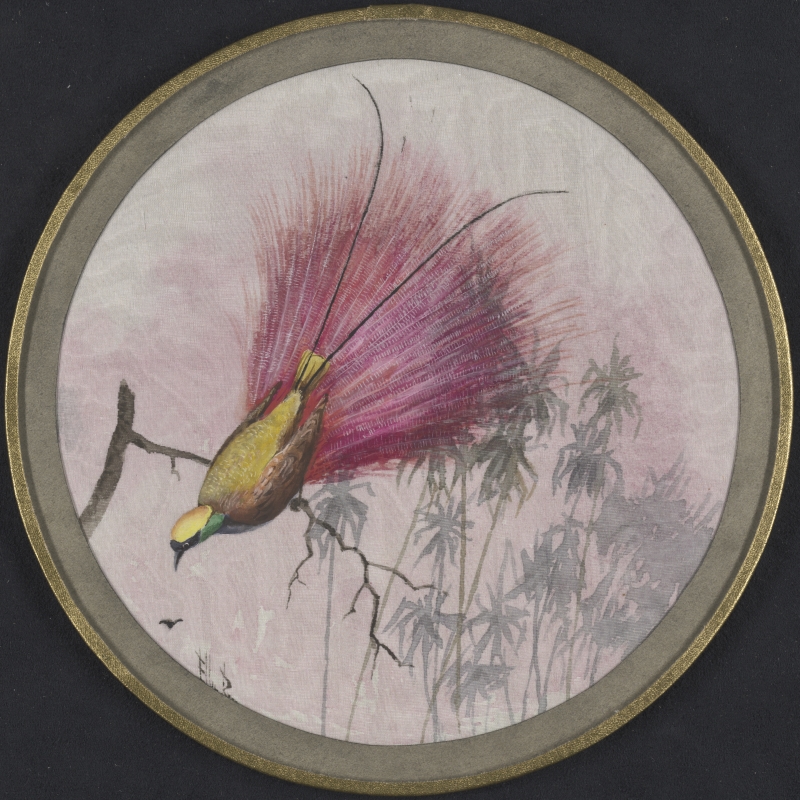
Ellis Rowan, most likely Goldie’s Bird of Paradise (Paradisaea decora), c.1917, nla.cat-vn1737588
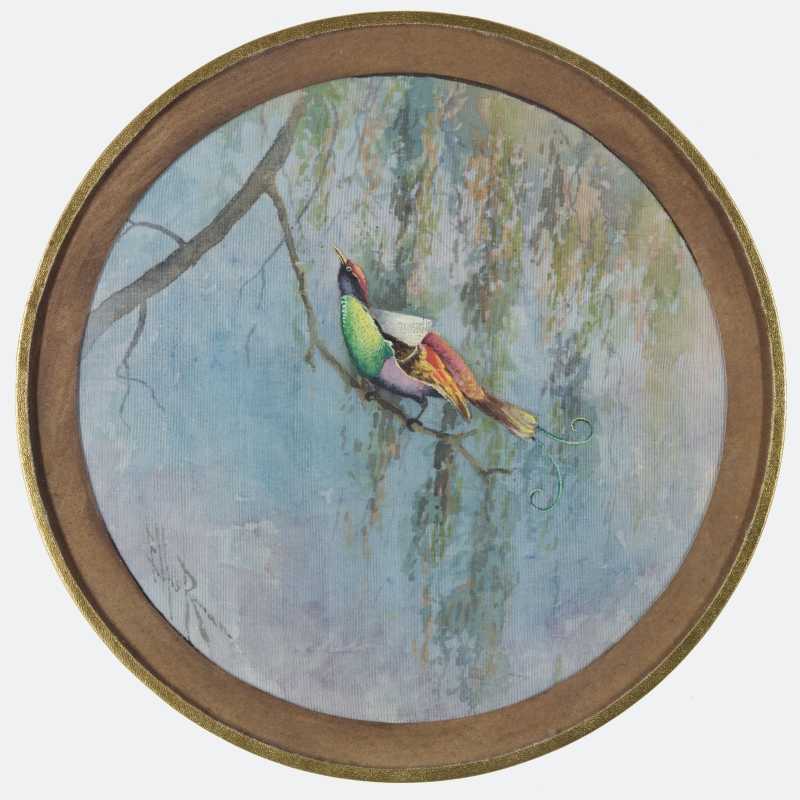
Ellis Rowan, Magnificent Bird of Paradise (Cicinnurus magnificus), c.1917, nla.cat-vn1736968
This bird is considered ‘magnificent’ due to its colourful feathers. It maintains a tidy court, which is a dedicated area on the forest floor, where it performs mating displays.
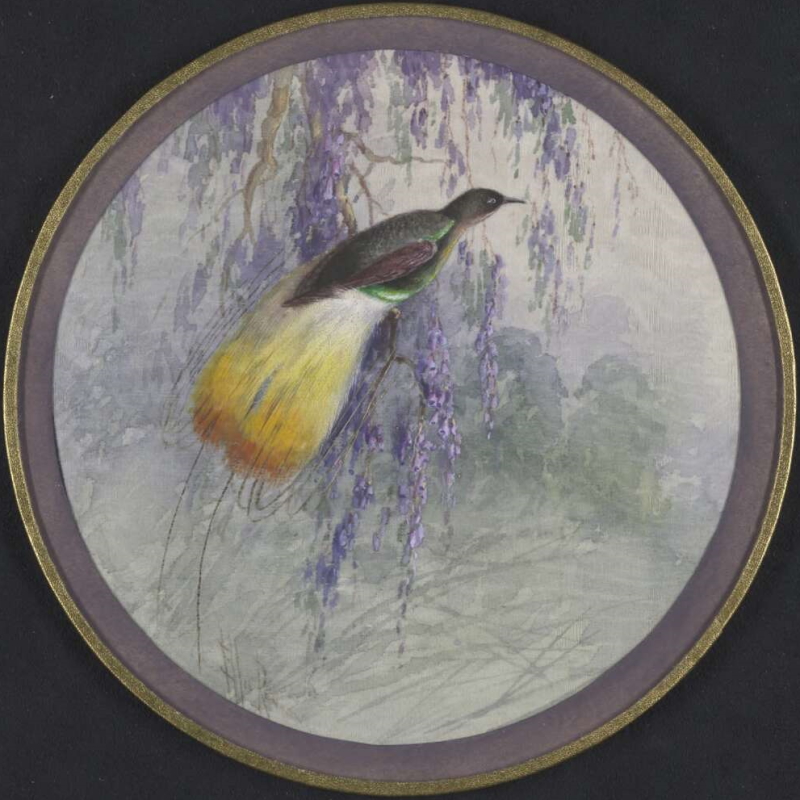
Ellis Rowan, Twelve-wired Bird of Paradise (Seleucides melanoleuca), c. 1917, nla.cat-vn214297
The distinctive wires on this bird, together with its golden plumes, are used during mating displays.
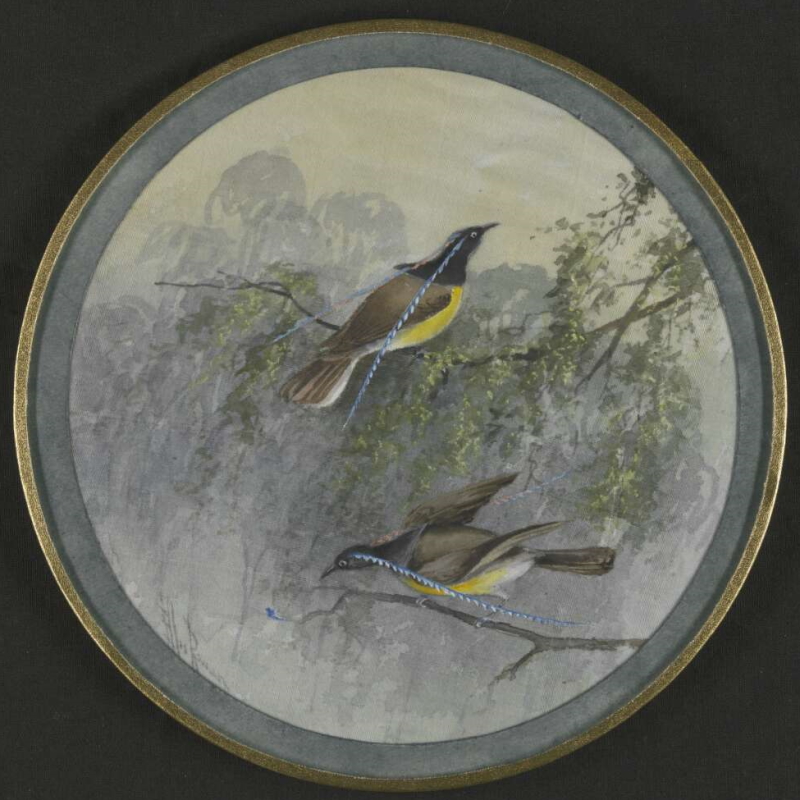
Ellis Rowan, King of Saxony Birds of Paradise (Pteridophora alberti), c.1917, nla.cat-vn1736452
The King of Saxony Bird of Paradise has a distinctive pari of brow plumes. These are used in courtship rituals.
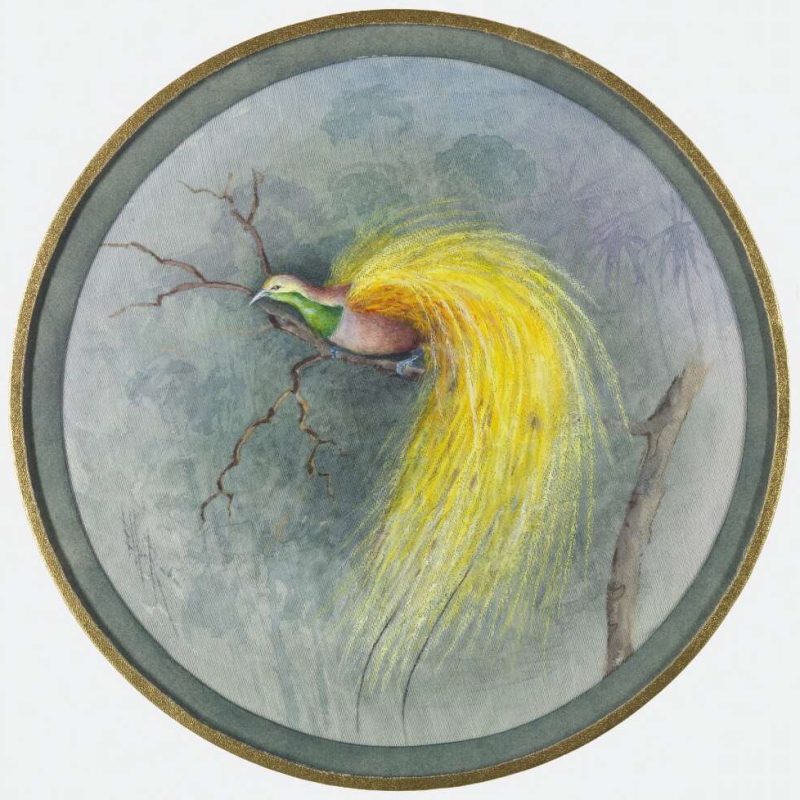
Ellis Rowan, most likely Lesser Bird of Paradise (Paradisaea minor), c.1917, nla.cat-vn214460
Irregular details on this and other birds Rowan painted make them hard to identify. This might be because she completed the works after seeing the birds in nature, worked from taxidermy specimens, or because she was depicting a hybrid species or a juvenile.
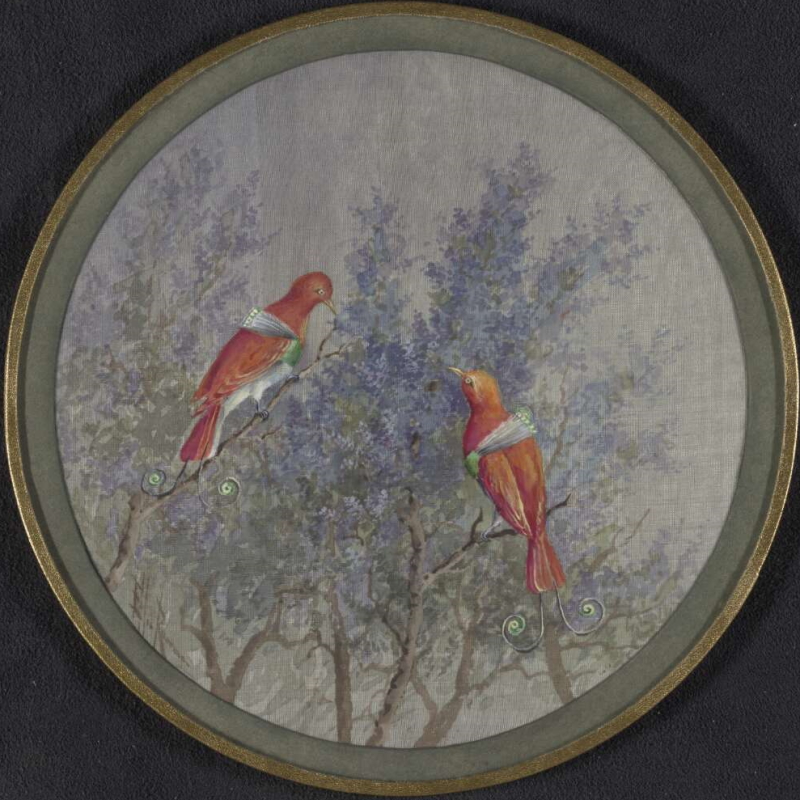
Ellis Rowan, King Birds of Paradise (Cicinnurus regius), c.1917, nla.cat-vn1736900
A two-dimensional image does not capture the magnificence of the King Bird of Paradise. Its elaborate courtship ritual makes use of its curled wires and vivid feathers.
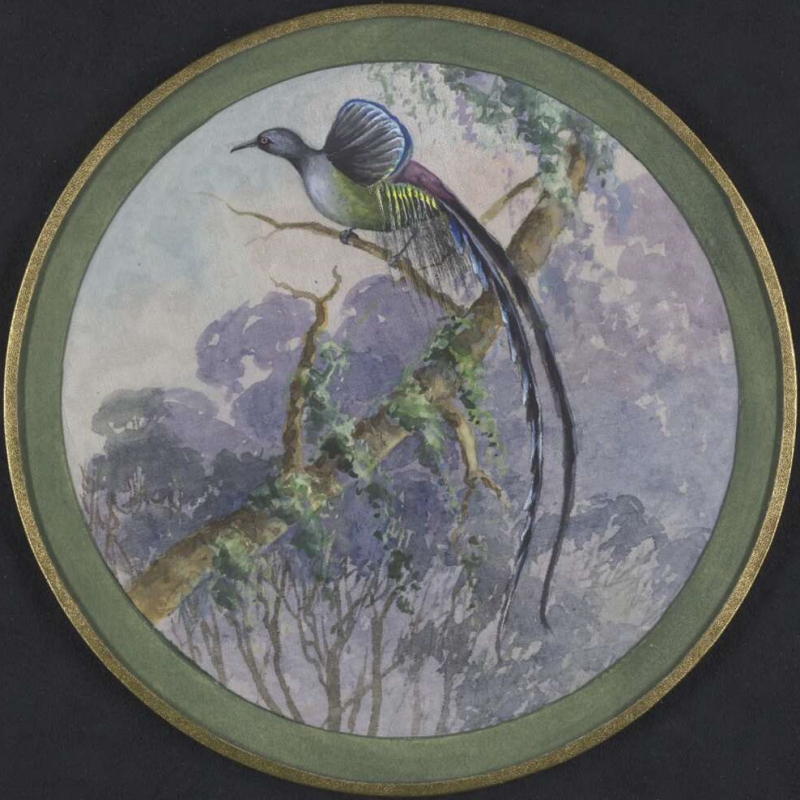
Ellis Rowan, most likely Black Sicklebill (Epimachus fastosus), c.1917, nla.cat-vn1736882
It is likely that this is a depiction of a juvenile male Black Sicklebill. Most of the Birds of Paradise take a long time to fully mature, in some cases it can take up to seven years for them to grow their distinctive feathers.
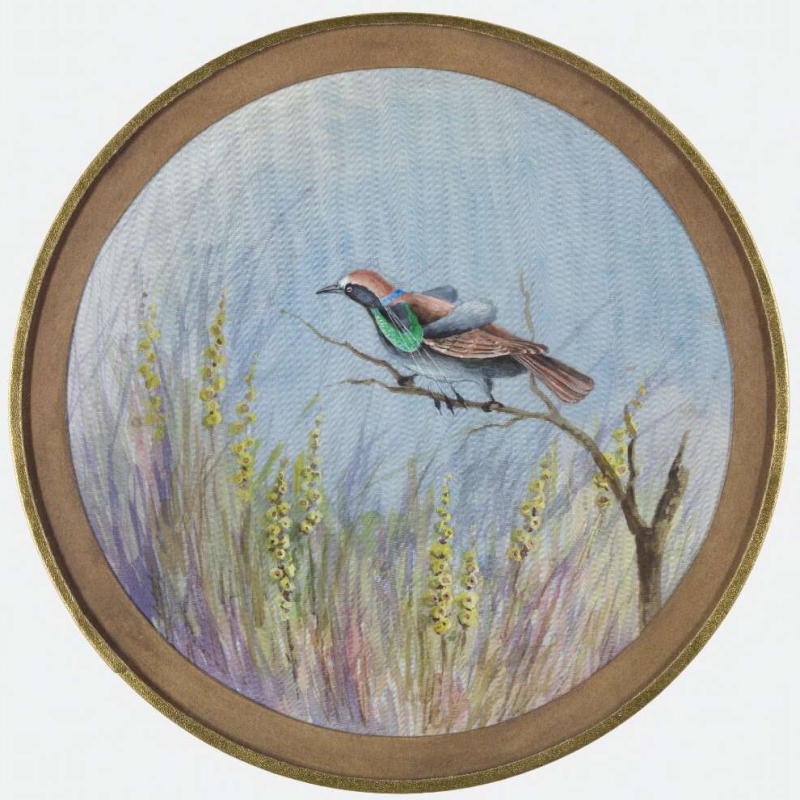
Ellis Rowan, most likely Western Parotia, also known as Arfak Parotia (Parotia sefilata), c.1917, nla.cat-vn215196
Explore the work of Ellis Rowan with the National Library
- View the Birds of Paradise paintings
- Read more about the life of Ellis Rowan
- Dive into the Library's Ellis Rowan Collection
- View the digitised collection
Return to the exhibition homepage